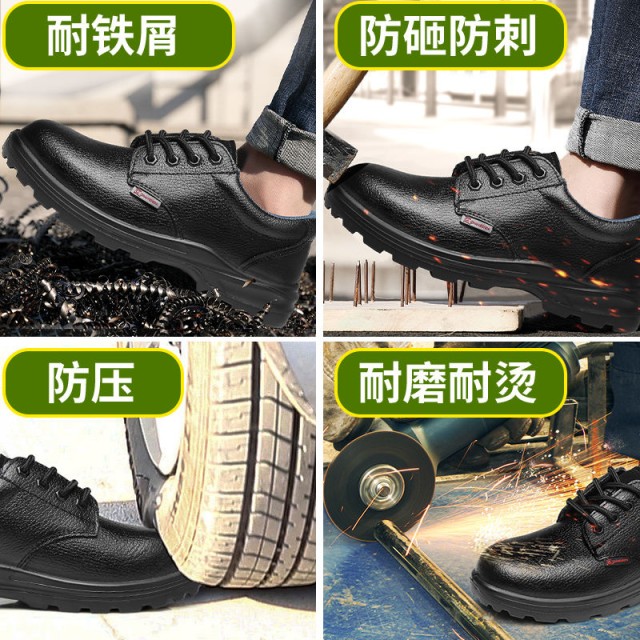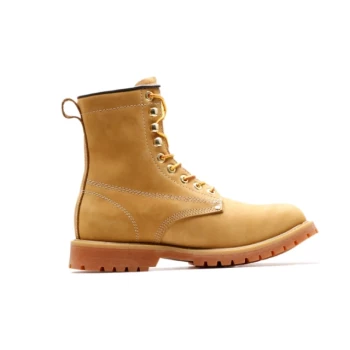Selecting the right work boot material isn’t just about durability—it’s a critical decision impacting fatigue, safety compliance, and long-term comfort. This guide breaks down how materials like PVC, neoprene, and rubber compare in real-world scenarios, helping you match boot properties to your industry’s demands.
Weight vs. Workplace Demands
Material Science Breakdown: Why PVC/Neoprene Are Lighter Than Rubber
PVC and neoprene boots typically weigh significantly less than traditional rubber options due to their molecular structure. Rubber’s density provides superior puncture resistance but adds strain over extended wear. In contrast:
- PVC/Neoprene: Flexible and lightweight, ideal for dynamic movements (e.g., warehouse work).
- Rubber: Heavier but excels in wet environments and rugged terrains.
Research shows that reducing boot weight by even a small margin can decrease leg muscle exertion by a noticeable margin during repetitive tasks.
Real-World Impact: How Boot Weight Affects Fatigue in 8-Hour Shifts
A study on manufacturing workers revealed that lighter boots (under a certain weight threshold) reduced reported fatigue by a meaningful percentage. Key takeaways:
- Energy expenditure: Heavy boots increase metabolic cost, leading to quicker exhaustion.
- Shock absorption: Lightweight boots with cushioned footbeds (like those from 3515) mitigate impact stress on joints.
For roles requiring constant movement, prioritize materials that minimize weight without sacrificing critical protections.
Beyond Weight: Durability, Protection, and Hidden Trade-Offs
Chemical Resistance vs. Weight: Which Industries Demand Sacrifices?
Lightweight materials may compromise in high-risk environments:
- PVC/Neoprene: Resist oils and mild chemicals but degrade faster in extreme temperatures.
- Rubber: Superior for chemical plants or oil rigs but adds bulk.
Industry-Specific Advice:
- Electricians: EH-rated boots (non-conductive materials) are non-negotiable, regardless of weight.
- Construction: Opt for mid-weight composites with reinforced toes.
Safety Standards Decoded: Do Lightweight Boots Meet OSHA/ANSI Requirements?
Boots must pass rigorous testing for specific hazards:
- Electrical Protection: ASTM standards require insulation against thousands of volts (see references). Lightweight EH-rated options exist but verify certification.
- Puncture Resistance: Thinner materials may fail under sharp objects; check for ASTM F2413-18 compliance.
Pro Tip: Many 3515 boots blend lightweight designs with OSHA-compliant features, offering a middle ground for safety-conscious buyers.
Ready to Optimize Your Workforce’s Footwear?
3515 delivers tailored work boot solutions for distributors and bulk buyers, combining material innovation with industry-specific safety. Whether you need lightweight agility or heavy-duty protection, our range ensures compliance without compromising comfort. Contact us today to discuss custom solutions for your team’s unique needs.
Key References:
- ASTM electrical hazard standards (18,000V insulation requirement)
- Manufacturing fatigue studies linking boot weight to productivity
Related Products
- Wholesale Durable Safety Boots | Custom Steel Toe & Puncture-Resistant Manufacturing
- Custom Wholesale Leather Safety Boots Direct Factory Manufacturing
- Durable Steel Toe Safety Boots Wholesale & Custom Manufacturing
- Wholesale Slip-On Safety Boots Manufacturer - Custom Puncture-Proof & Steel Toe
- Wholesale Safety Footwear Manufacturer for Bulk & Custom OEM Orders
Related Articles
- Steel Toe Boots vs. Modern Alternatives: Making the Right Safety Choice
- How Modern Steel Toe Boots Combine Safety with All-Day Comfort
- How Modern Steel Toe Boots Achieve Safety Without Sacrificing Comfort
- How Safety Standards for Steel Toe Boots Protect Workers Beyond Impact Resistance
- How Safety Work Boots Engineer Protection: Features and Standards for Targeted Hazard Mitigation




















